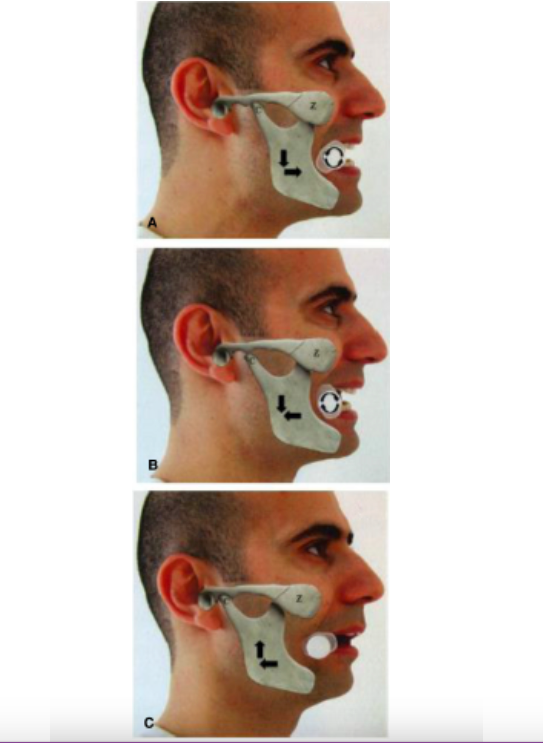Background
Acute nontraumatic temporomandibular joint (TMJ) dislocations are uncommon presentations in the ED that occur after excessive mouth opening. Common circumstances include laughing, yawning and dental extraction. The most common TMJ dislocation is the anterior form and reduction can be labor intensive, protracted and typically requires procedural sedation.
Clinical Question
Can a novel, hands-free technique (described below) result in a high rate of mandible reduction after non-traumatic dislocation?
Population
Adult subjects (> 18 years of age) with atraumatic TMJ dislocation
Intervention
Hands-free, “Syringe technique”
Outcomes
Primary: Successful reduction
Secondary: Reduction < 1 minute
Design
Prospective, observational study using a convenience sample of patients
Excluded
Traumatic injuries
Primary Results
-

The “Syringe Technique”
31 patients with anterior dislocations recruited (20 women and 11 men)
- Dislocation mechanism
- Chewing n=19
- Yawning n = 8
- Talking/laughing n = 3
- Dental visit n = 1
- 9 patients with repeat dislocation
Critical Findings:
- Successful reduction: 97% (30/31)
- Successful reduction < 1 min: 77% (24/31)
- Unsuccessful reduction in edentulous woman who was unable to effectively grasp the syringe with her gums
Limitations
- Non-consecutive patient recruitment (convenience sample)
- Single-center study decreasing external validity
- Originally, traumatic TMJ dislocations were included but the study group found a very high failure rate in this group and post-data collection excluded this group
- All of the patients in this series had anterior dislocations. This technique may not be successful in lateral or posterior dislocations
Author's Conclusions
“We describe a novel technique for the reduction of the acutely nontraumatic TMJ dislocation in the ED. It is simple, fast, safe, and effective.”
Our Conclusions
The “syringe technique” for TMJ dislocation reduction is cheap and simple. The data here shows high efficacy in a short period of time for atraumatic, anterior dislocations. Additional investigation in other centers would be useful in demonstrating reproducability of these results.
Potential Impact To Current Practice
This approach represents an additional option for TMJ dislocation reduction in the ED. Because it is simple and does not require sedation or parenteral medications, it is and excellent option for resource limited environments.
Bottom Line
The “syringe technique” appears to result in rapid reduction of TMJ dislocations in the majority of patients without requiring parenteral medications in this small observational study.
Read More
EM Lit of Note: TMJ Dislocations: A Better Mousetrap?
Core EM: Podcast 47.0 – TMJ Reduction